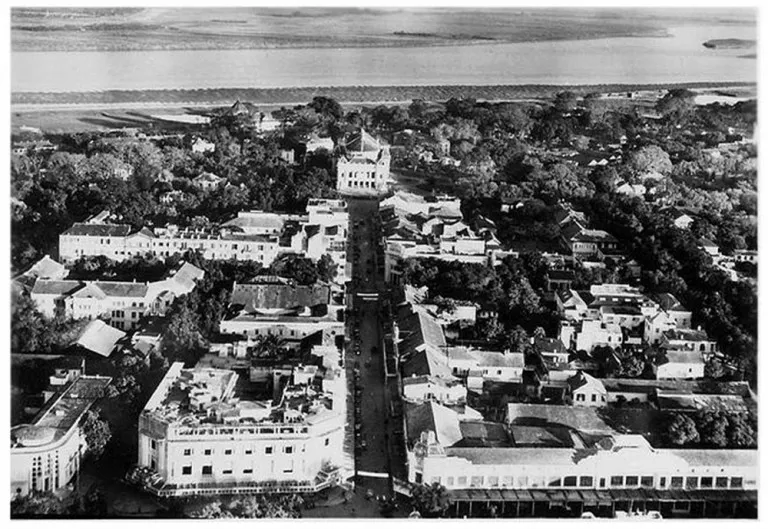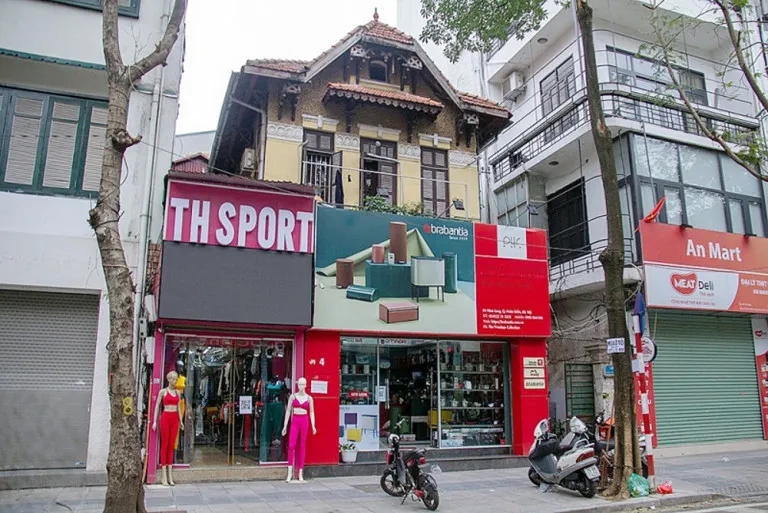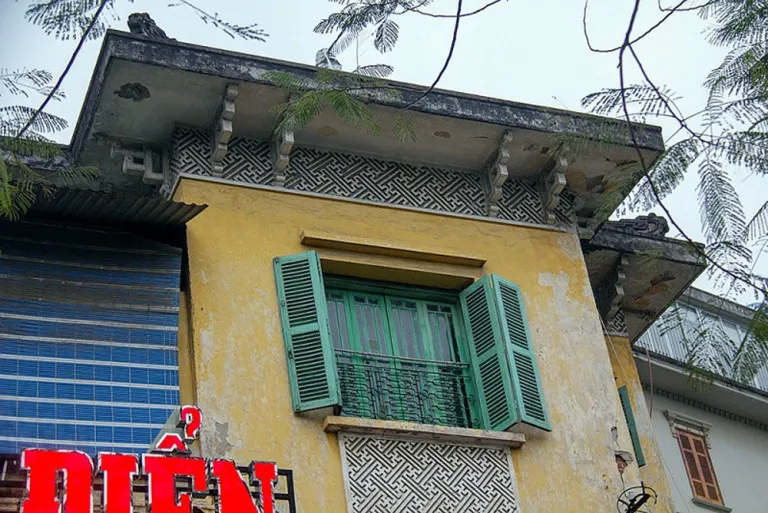Hanoi, the heart of Vietnam, is not only a capital with a rich history but also a living architectural museum. Here, French colonial houses silently tell the story of a unique cultural intersection, where Western architecture blends with Vietnamese identity, creating an indelible mark. However, facing the challenges of time and urban development, preserving these “historical witnesses” has become a difficult problem, requiring the joint efforts of the entire community.
French Architecture in Vietnam: A Journey from Colonial Rule to Heritage
French architecture was introduced to Vietnam in the 19th century, marking a new chapter in the history of construction and urban planning. Initially, these structures bore the strong imprint of the colonial government, with the aim of asserting power and showcasing the French presence. However, over time, French architecture gradually adapted and integrated into the Vietnamese cultural environment, creating a unique architectural style known as Indochinese architecture.
French colonial houses in Vietnam are not merely buildings, but also works of art, historical witnesses, and an indispensable part of Vietnamese cultural identity.

The Octagonal House at Chu Van An High School, a prime example of classic French colonial architecture preserved intact, demonstrating the unique cultural and architectural fusion in Hanoi.
Architectural Features of Old French Houses in Vietnam
Old French houses in Vietnam possess distinct characteristics, reflecting a harmonious combination of Western architecture and indigenous elements:
- Building materials: Using local materials such as brick, tile, wood, combined with imported materials from France such as steel and cement.
- Facades: Often featuring wide, symmetrical facades with intricate decorative details such as patterns, reliefs, columns, and balconies.
- Roofs: Tiled roofs, bright red or gray, sloped, with many dormer windows for ventilation and natural light.
- Windows and doors: Usually large in size, sturdy wooden frames, with meticulous decorative motifs.
- Interior space: Designed to be airy, with plenty of natural light, and functional rooms arranged logically.

Hanoi cityscape in 1930, showcasing the blend of French architecture and traditional urban space, creating a unique and charming urban picture.
Historical, Cultural, and Architectural Values of Old French Houses
Old French houses in Vietnam are not only beautiful architectural works but also carry invaluable historical, cultural, and architectural values:
- Historical value: Witnesses to a turbulent historical period, associated with French colonialism and the Vietnamese people’s struggle for independence.
- Cultural value: Representing the East-West cultural exchange, creating a unique cultural identity of Vietnam.
- Architectural value: Unique architectural artworks, demonstrating the creativity and talent of Vietnamese and French architects.
Current Conservation Status and Challenges
Currently, many old French houses in Vietnam are facing the risk of degradation and even destruction due to lack of maintenance funds, changes in the urban environment, and insufficient conservation awareness. The preservation of these architectural heritages poses many challenges:
- Financial resources: Large costs for conservation and restoration, requiring investment from the State, social organizations, and individuals.
- Conservation awareness: Raising community awareness about the value of architectural heritage and the importance of conservation.
- Urban planning: The need for reasonable urban planning, ensuring harmony between heritage conservation and socio-economic development.
- Legal policies: Completing the legal system on heritage conservation, creating a solid legal framework for this work.

Old villa at 49 Tran Hung Dao Street, a typical example of the serious degradation of French colonial architecture in Hanoi, requiring timely intervention for preservation.
Conservation Solutions and Value Promotion
To conserve and promote the value of old French houses in Vietnam, comprehensive and effective solutions are needed:
- Research and assessment: Conducting research and assessing the current status and value of each structure to provide a scientific basis for conservation.
- Classification and ranking: Classifying structures according to their level of value and conservation status to develop appropriate conservation plans.
- Restoration and renovation: Implementing restoration and renovation of degraded structures, ensuring the preservation of original values.
- Rational use and exploitation: Seeking appropriate forms of use and exploitation, ensuring both conservation and economic value creation.
- пропаганда and education: Strengthening пропаганда and education about the value of architectural heritage, raising community awareness of conservation.
- International cooperation: Expanding international cooperation to learn from experience and attract financial resources for conservation efforts.

Many French colonial villas in Hanoi have undergone renovations to suit modern living, but this inadvertently diminishes their original architectural beauty and makes them feel out of place amidst the urban landscape.
Prominent Locations to Admire French Colonial Architecture in Vietnam
- Hanoi: The Old French Quarter with structures such as the Opera House, Presidential Palace, History Museum, Metropole Hotel.
- Hai Phong: The Old French Quarter with structures such as the City Opera House, City Post Office.
- Da Lat: Old villas scattered on the hills, bearing a strong French architectural style.
- Hue: French architectural structures in the Citadel and old villas along the Perfume River.

The delicate combination of French architecture and decorative elements imbued with Vietnamese culture, reflecting a unique and creative fusion in Indochinese architecture.
Conclusion
Old French houses in Vietnam are an indispensable part of the national cultural heritage. Preserving and promoting their value is not only the responsibility of the State but also of the entire community. Let’s join hands to preserve these “historical witnesses” for future generations, so that the stories of a unique cultural intersection will forever be passed down. We need to act today to preserve these invaluable architectural heritages, because they are not just buildings, but also the soul of the nation, the pride of Vietnam.
